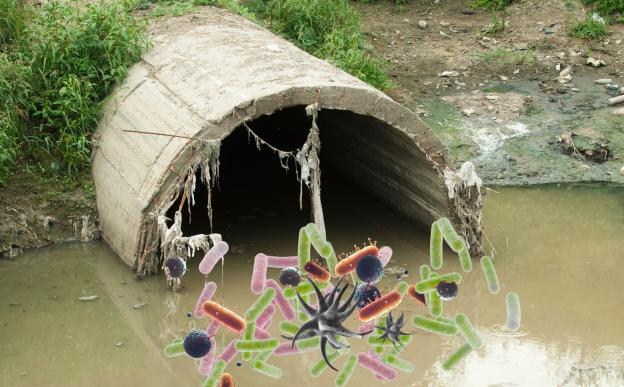![Photo : The Netravati River by Arjuncm3 [CC BY-SA 3.0 ], from Wikimedia Commons Photo : The Netravati River by Arjuncm3 [CC BY-SA 3.0 ], from Wikimedia Commons](/sites/researchmatters/files/styles/large_800w_scale/public/main_17.jpg?itok=MydowMaX)
Floods in the Netravati river, historically called the Bantwal River, in the south of Karnataka are a common sight during the Southwest monsoon. The natives of the Bantwal town still relive the fear of devastating floods of 1974 whenever the water level rises, as it did recently in 2013 and 2015 and again this year in 2018. Are all the changes in the river water level because of variations in the rainfall? Not quite, says a recent study from the Indian Institute of Technology Bombay that has identified the land use patterns in the Netravati river basin as an important cause.
The study, published in the journal Environmental Earth Sciences, suggests that urbanisation is the primary cause for the increase in draining of the rainwater and washing away of the soil downstream in the Netravati basin. It analysed five different time periods from the past, starting from 1972 and one projected scenario for 2030 using a standard model called the soil and water assessment tool (SWAT). The research was funded by the Department of Science and Technology, Government of India.
The river Netravati, which originates in the Western Ghats, and is the primary source of drinking water for the cities of Mangalore and Bantwal. “Approximately 1.2 million people live in the Netravati basin, and this number is expected to more than double by the year 2030. Studying the effect of future changes is crucial for better management of the agriculture system and maintaining water resources in the future”, says Prof. Eldho T. I. from the Department of Civil Engineering at IIT Bombay, who is also an author of the study.
The availability of water is sensitive to what purposes the surrounding land is used (land use), and to what covers the surface of the land (land cover). Any change in the land use or the land cover affects the surface features like the plant cover, concrete surface, elevations and slopes, which in turn impacts the rainwater drainage and water flow. For instance, increased urbanisation leads to an increase in watertight concrete cover. Water drains off quickly because of this, reducing the seepage of rainwater into the ground. Thus, people dependant on groundwater for drinking, irrigation and other purposes face water scarcity in the region.
The study reports a four-time increase in the urban area from about 60 sq km in 1972 to 240 sq km in 2012 and projects that this could increase to a whopping 340 sq km by 2030. The rapid urbanisation increases the risk of floods, adversely impacts groundwater availability and causes loss of agricultural productivity due to erosion.
The study also observes that increasing agriculture is the second major cause for the alterations in basin characteristics. Since 1972, the agricultural area has increased by around 15% until 2012 and is projected to increase by another 24% by 2030. On the contrary, there has been a continuous decrease in the forest area resulting in 18% of deforestation during the same period. The study predicts a further decline of about 26% in the forest area by 2030.
“The urban expansion is mainly found at the downstream stretch of the river basin around the city of Mangalore. The maximum change in agriculture is observed in the eastern parts and the lower part of the basin along the riverbed near urban areas. The impacts of the changes in the urban land are expected to continue till 2030”, remarks Prof. Eldho on the findings of the study.
In the wake of a looming water crisis, the researchers believe that their results could be used to better manage water in the river basin. They advocate management plans that include afforestation in the significantly affected regions to minimise the adverse impacts of the land use and land cover changes. Prof. Eldho says, “It is also essential to have an appropriate management plan in areas like Mangalore, Bantwal, and Puttur where the maximum increase in agriculture and urbanisation is expected in the near future. Also, it is important to deal with the water scarcity and quality issues in the less populated regions of the Netravati basin.”
The authors claim that the methodology proposed in this study can also be applied to other river basins for better water resource management plans. Moving forward, they plan to extend the study to answer the probing research question, ‘which one affects the river basin in the Western Ghats more at present and in future, land use change or climate change?’ The researchers are also trying to develop an appropriate management plan for water resource management in the region.
























